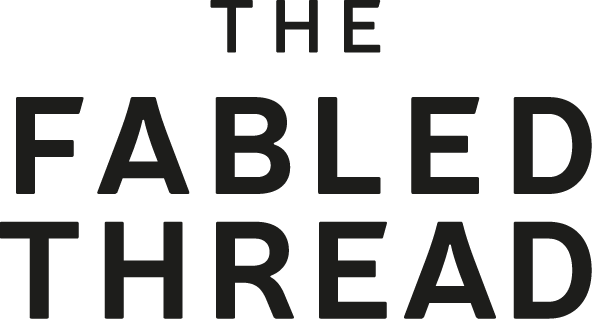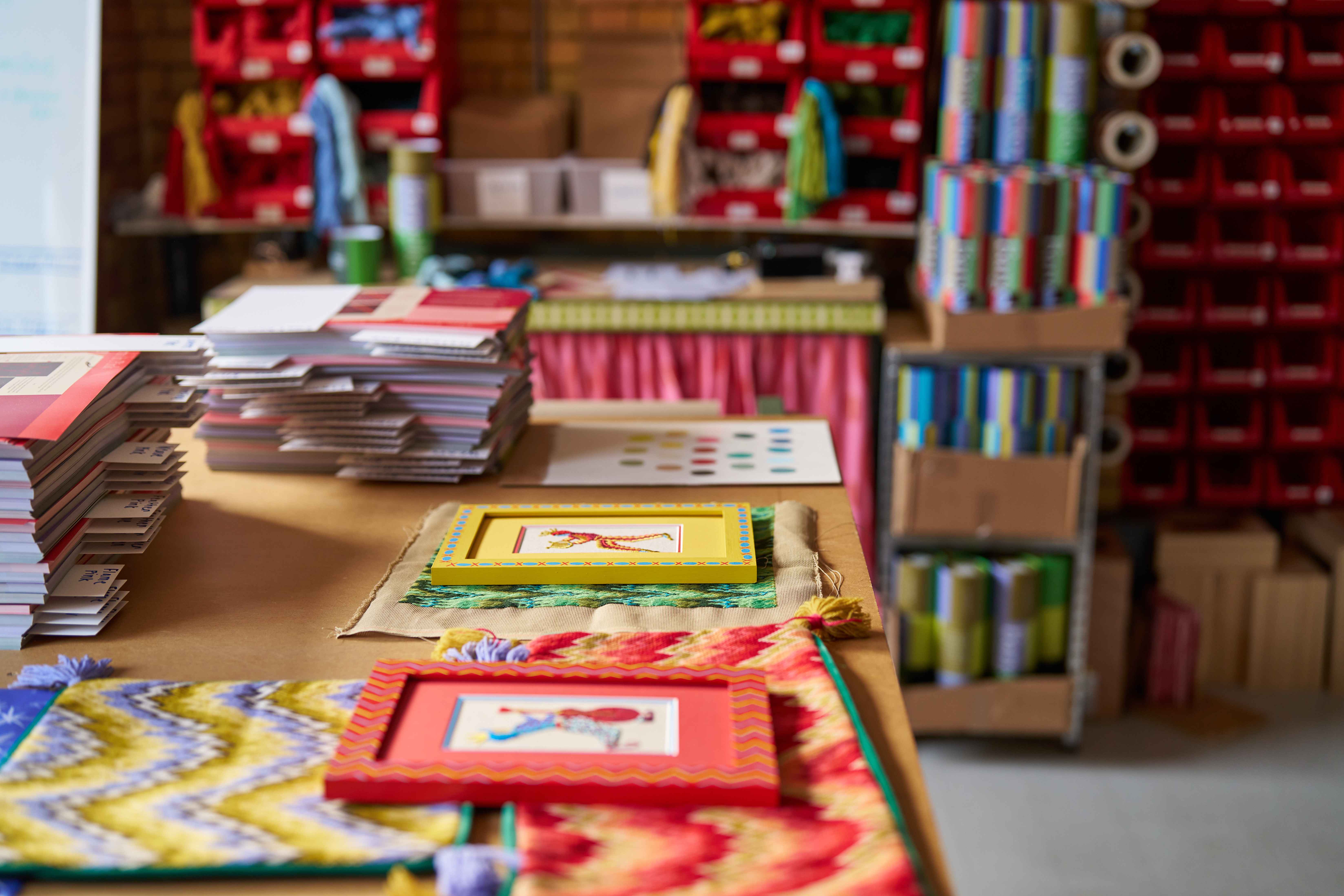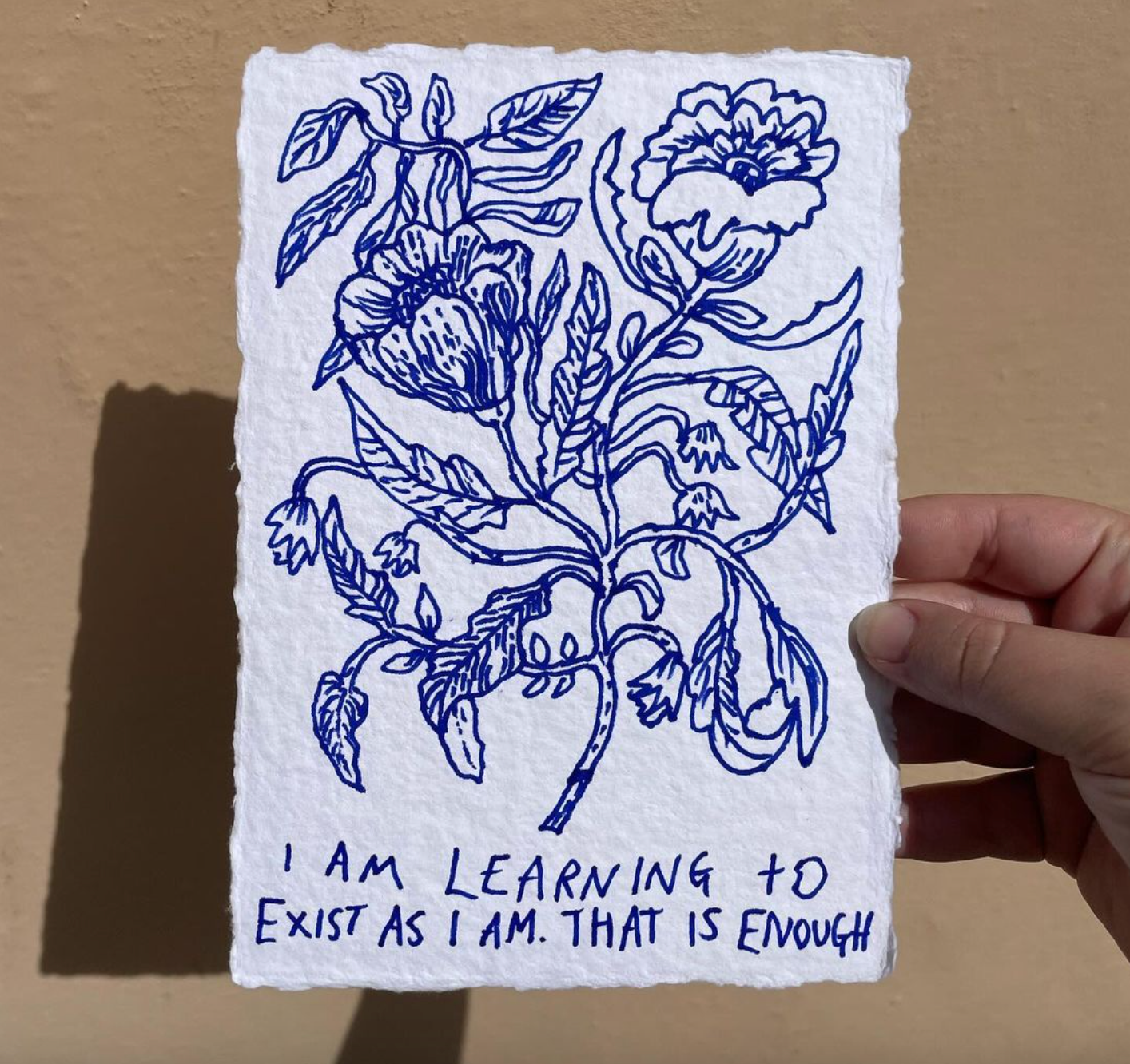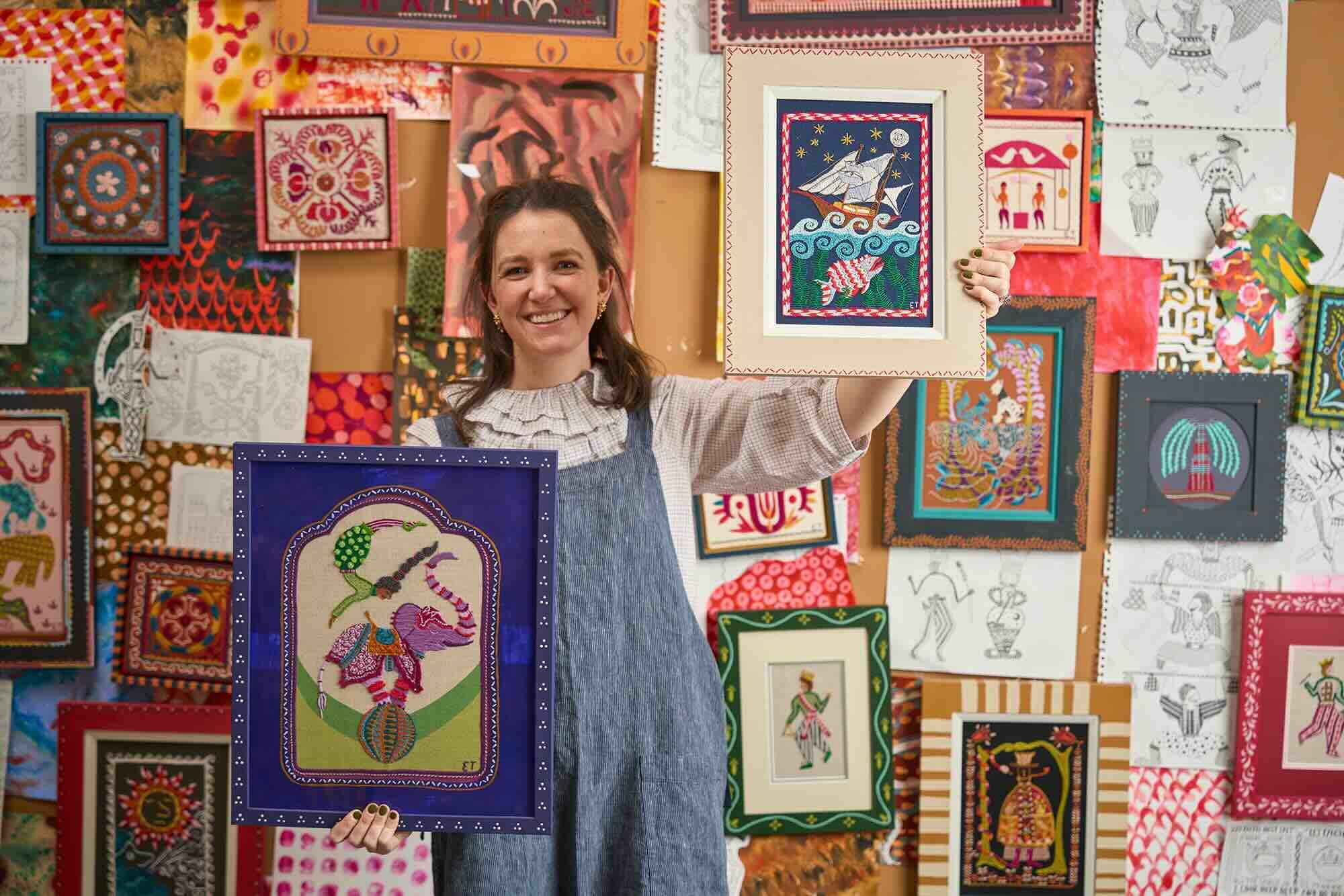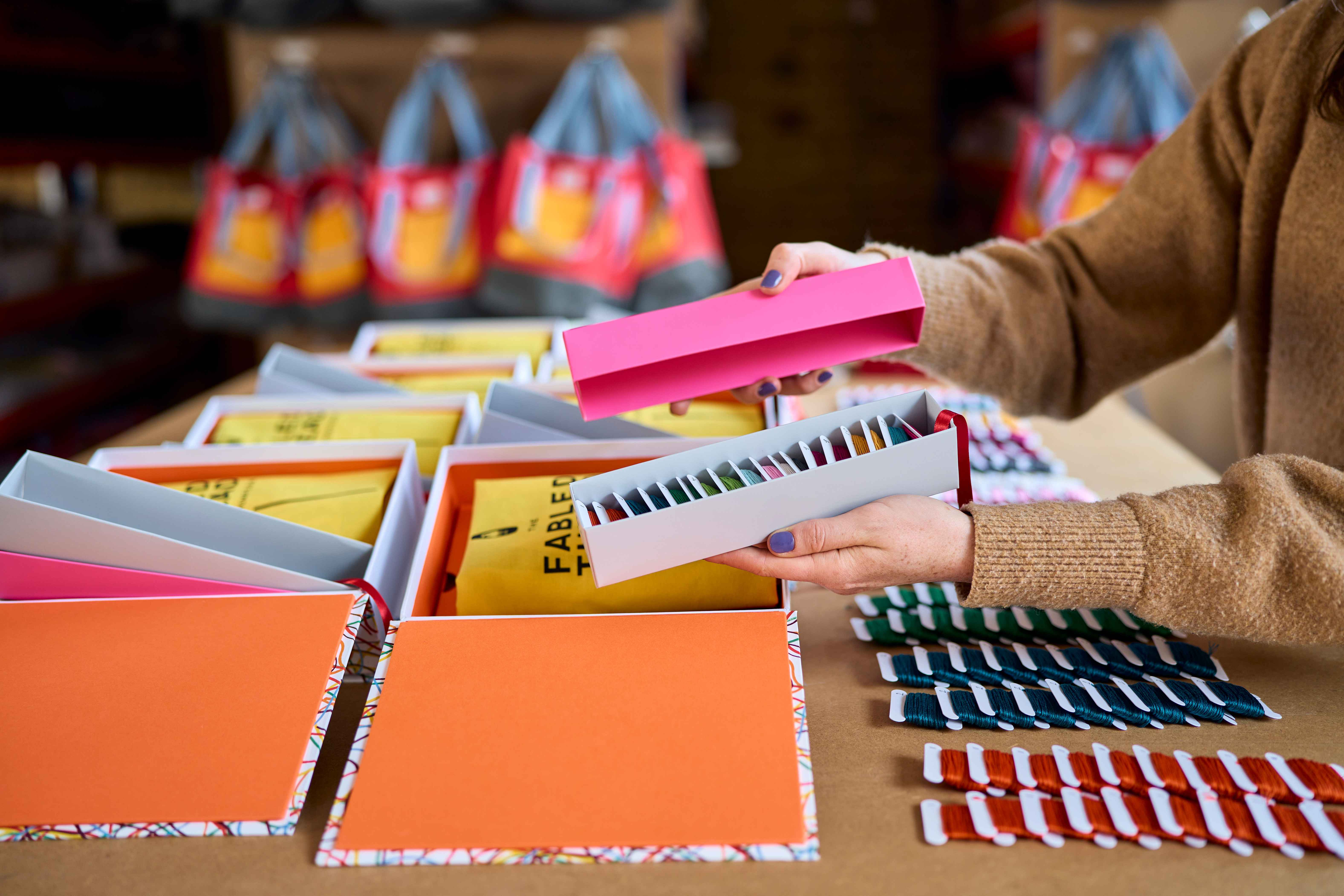
Why Don’t You Release More Designs?
In this Honest Answer I want to talk openly about how we respond to those emails that land in our inbox: “When’s the next launch?”, “Have you ever thought of doing a bear design?” , “Can you add some more stocking designs?”or “What about alphabet samplers?” Honestly, these notes are such a joy to receive. The fact that you care enough to ask, to imagine ideas you want me to interpret, to want more from The Fabled Thread—it means the world.
But I thought it might be helpful to talk a bit more about how our design process actually works, and why new designs aren’t flung out with wild abandon every few weeks. Let’s take a peak behind the curtain.
Let me start by saying this: it’s never a lack of inspiration. I have a design list longer than my arm—story concepts, style ideas, mediums I want to explore, things I’ve scribbled on scraps of paper at random hours of the day. But most of them sit quietly in the back of my brain for at least a year before I even begin exploring them properly. If they’re still niggling away at me after that, I know they’re worth a closer look.
But turning those ideas into finished kits? That’s where time, cost and longevity come crashing in.
Now, on the surface, you might think the design process is fairly straightforward. Draw something. Turn it into an embroidery. Done, right? Not quite.
First, the ideas themselves take time to form. They sit and stew, sometimes for months. I obsess over them quietly—researching, sketching, daydreaming—and then, one day, when the mood is right, it all clicks. My best designs tend to happen quickly once I actually sit down, but the thinking behind them takes ages.
When I do sit down with my sketchbook, I might produce six designs in an afternoon. But the truth is, those drawings are the result of months of slow simmering.
And then comes the practical bit:
- Does this design feel like The Fabled Thread?
- Is it trend-led or timeless?
- Can it be made affordably enough to actually sell?
- Will it appeal to someone different from what we’ve already done?
Sometimes a concept that seemed perfect just doesn’t translate. Sometimes I get halfway through prototypes and realise I’m trying to make something “popular” rather than something right. And when that happens, I stop. Because I’d rather kill a design than push out something that feels off-brand.
And of course, I’m the only designer. I’m also the one doing marketing, finance, admin, content… you name it. The time I spend designing is time I’m not spending elsewhere in the business, so I have to be careful about where I put my energy.
Oh, and then there’s the actual stitching.
Embroidery designs take anywhere from 5 to 25 hours to test. Needlepoint? 60 to 120 hours. We work with test stitchers for needlepoint, but embroidery is done in-house—so we’re talking serious hours before a design even sees the light of day.
And once that’s done, we still need to:
- Write instructions
- Record and edit video guides
- Photograph everything professionally
- Create packaging and source components
- Order the componants
- Add it all to the website
- Plan a launch campaign
- Have storage for another range of kits
Basically, however long the design took? At a minimum, triple it for the admin.
Then there’s the cost. My time is one thing—but every new product traps more cash in stock. Packaging and instructions usually need to be ordered in the hundreds to be remotely affordable. Storage space gets squeezed. Our operations team has more SKUs to manage. We have to pay test stitchers, invest in prototypes, photograph everything.
And sometimes, after all that investment, it takes months to break even. Never mind turn a profit.
I spent the first three years building a beautiful portfolio of designs… but without enough time or money left over to market them properly. Lesson learned.
The last piece of the puzzle is longevity. If we’re going to spend all this time and money on a design, it has to last. I want someone to love their kit now and in 20 years’ time. I want it to feel timeless.
That means being incredibly disciplined. Not chasing trends. Not letting myself get distracted by what’s currently popular on Instagram. Not looking at what other designers are doing for fear they will subconsciously influence me. I test ideas thoroughly—sometimes even by quietly asking our one-on-one customers what they think. It’s a slow, deliberate process.
In theory, yes. I am planning to train one of our team to support with design work, which will be wonderful—but we’re still a small team, my design process is incredibly personal and unstructured—so it requires us to invest a lot of time to get to a point where we can work seamlessly together. The commercial reality is we have to be able to afford the time and cost of more releases.
In the meantime though, whilst my focus has to be on marketing the business and designs we already have, I am experimenting with collaborations—something very exciting is in the works!—but I've thought very long and hard about who we work with. There has to be complete alignment in values, tone and craft - as well as bringing in a different perspective that we could never achieve without them. Otherwise, what’s the point?
Could we chase trends? Absolutely. Zodiacs kits. Tarot kits. Alphabet kits. They’d fly off the shelves and I am sure I'd be able to bring a unique Fabled Thread perspective to them. But they’re not me. And if a design doesn’t excite me, what’s the point?
Here’s a gentle thought: do you actually need constant newness?
We have over 80 designs in our range, across embroidery and needlepoint. Different styles, budgets, skill levels, time commitments. We offer hundreds of combinations of materials and other products for people who want to design their own. We have courses, community challenges, and lots of inspiration. What we already have is abundant.
So no, we’re not doing 8 collections a year like a fashion brand. I aim for two meaningful launches annually—whether it’s a range expansion, a new collection, or, it can be a digital offering like our virtual courses. But I want to make sure I throw my all into each one and that's its bringing something to our portfolio that feels different.
The faster you launch, the faster you can grow - there is some truth in that. But with a small team, churning out loads of designs inevitably means we will investivably create loads of mediocre work, quick to implement, in the hope something sticks. That doesn't sound like a business thats going to stand the test of time. And honestly? Sometimes too much choice is just overwhelming. So, if you ever wonder why the new ranges aren't coming thick and fast, I hope this explains why!
